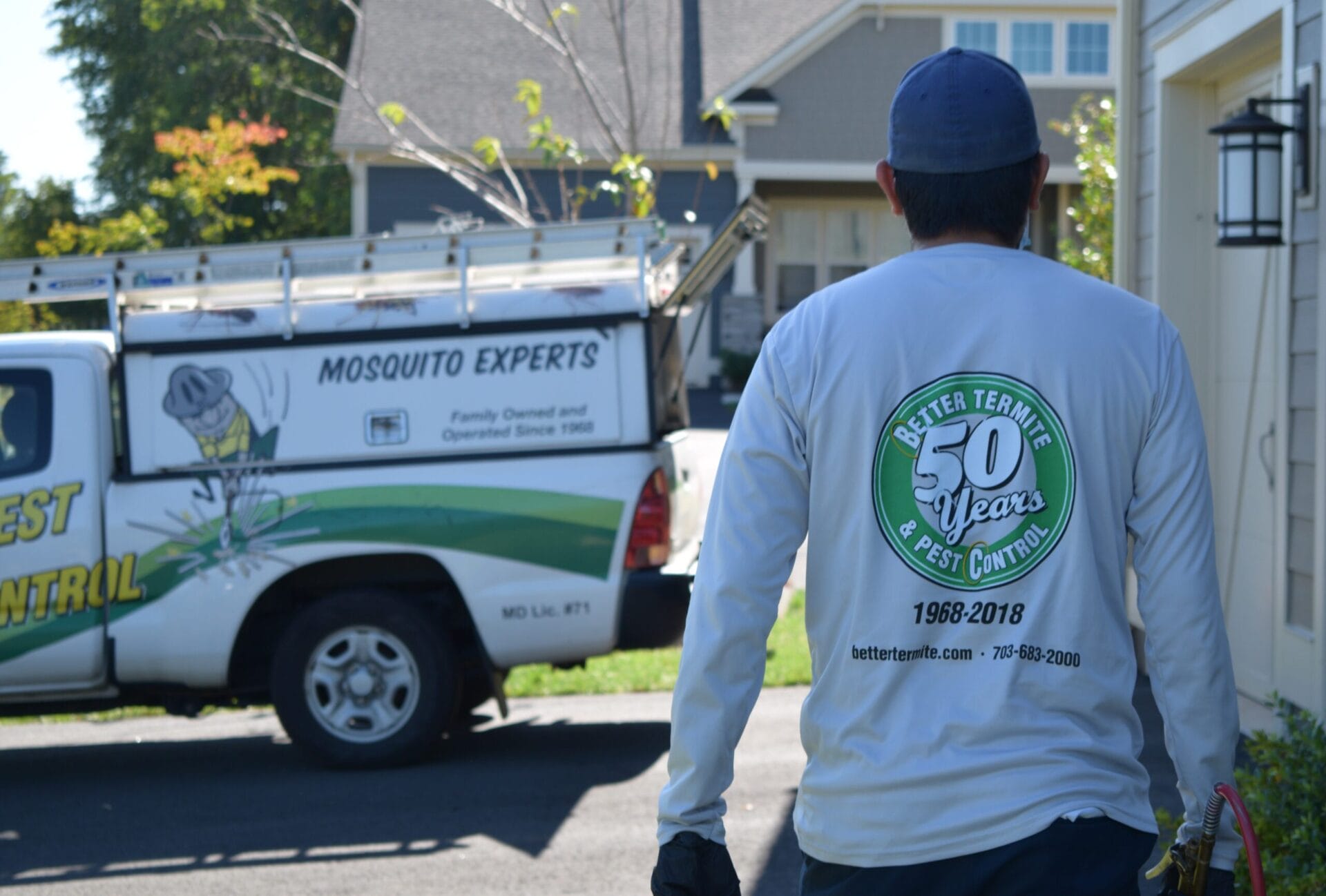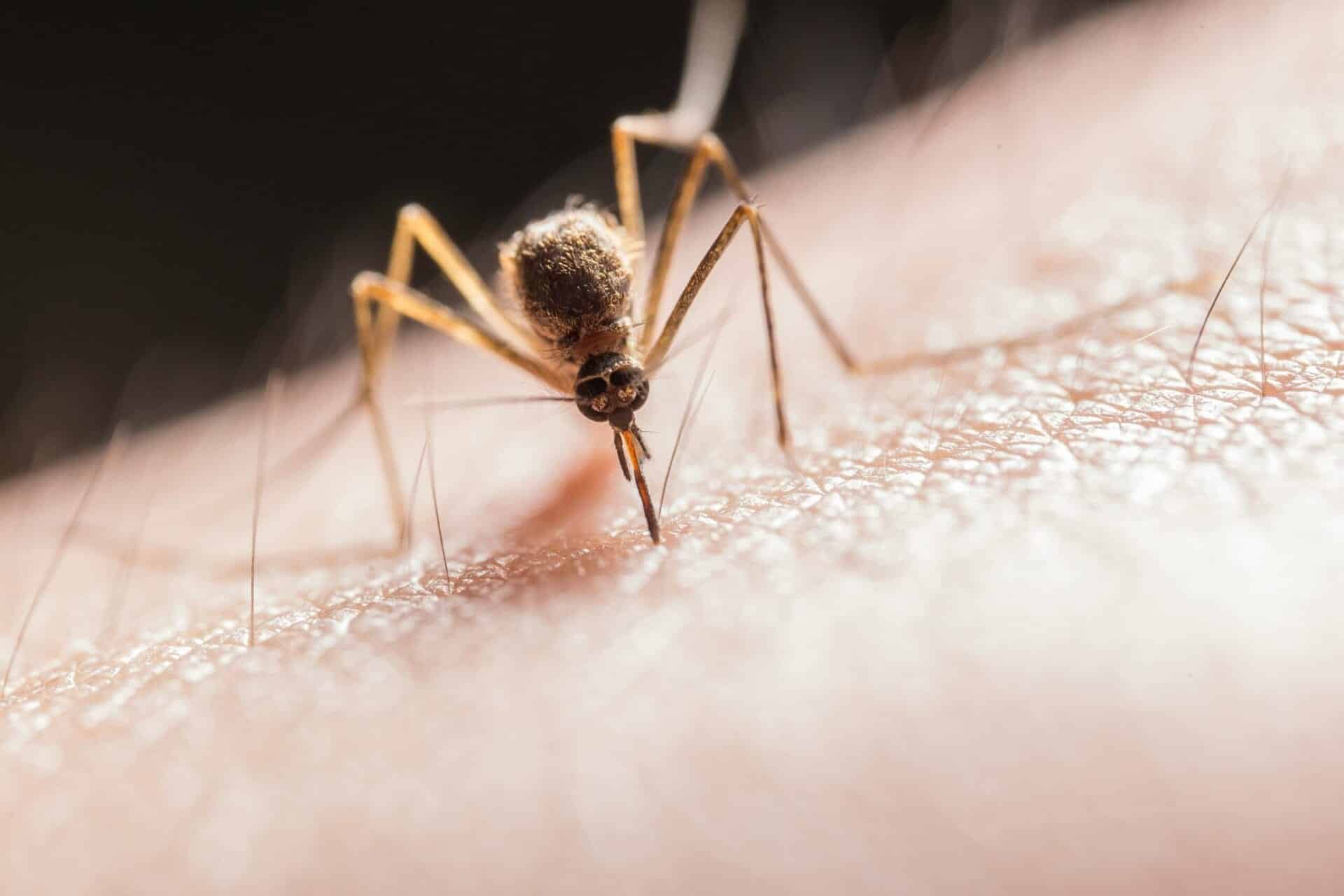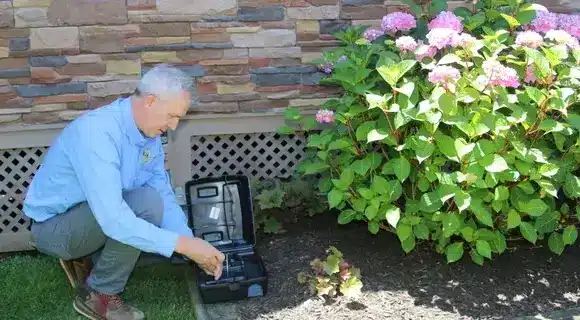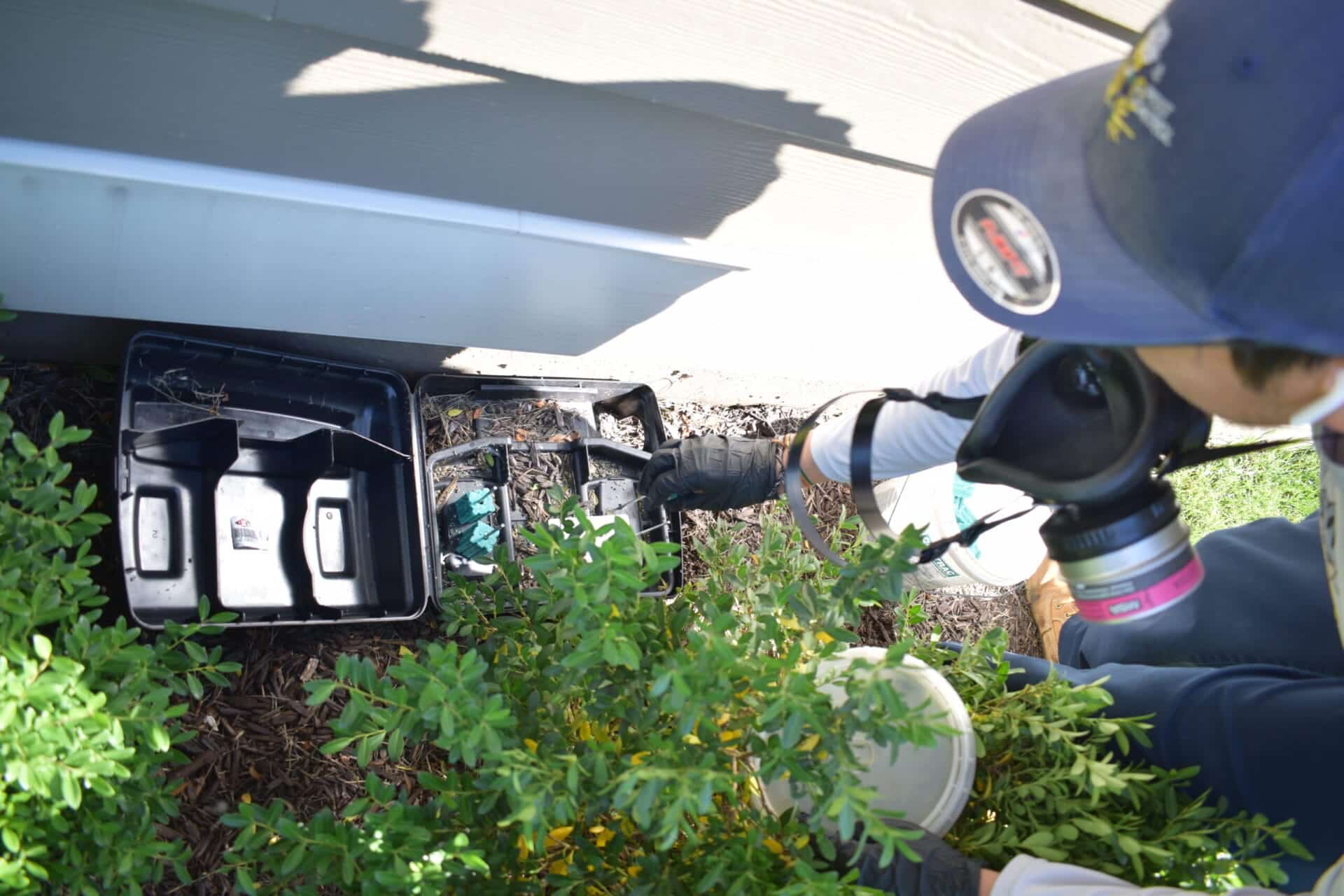


Quick Navigation
When you spot tiny ants marching across your kitchen counter, it’s natural to wonder exactly what type of pest you’re dealing with. In Virginia and Maryland homes, two species often get confused: ghost ants and what homeowners commonly call “sugar ants” (which are actually odorous house ants). Understanding the difference between these tiny invaders is crucial for effective treatment.
As a licensed technician since 2015, I’ve helped countless homeowners in the Virginia and Maryland area identify these ant species. The distinction matters because each requires a different approach to eliminate successfully. Let me walk you through everything you need to know about ghost ants vs sugar ants.
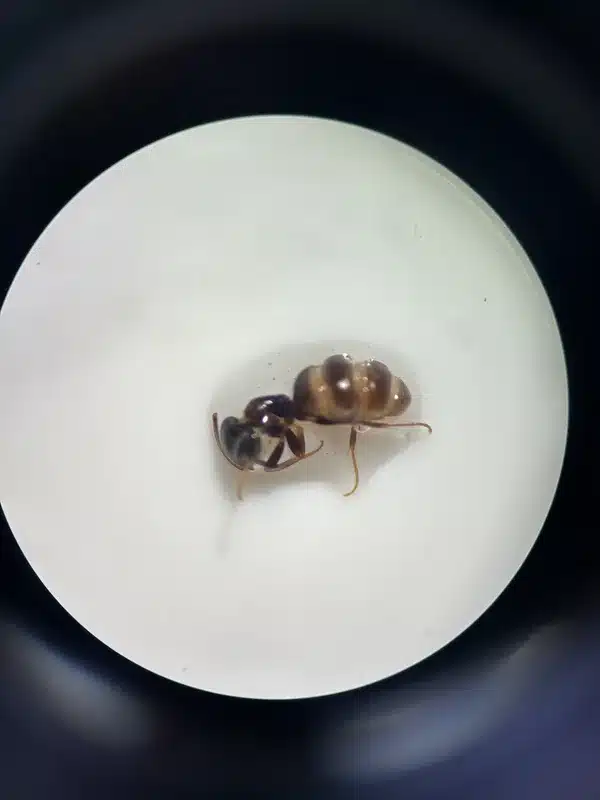
Before diving into comparisons, let’s clear up a common misconception. When homeowners in Virginia and Maryland say “sugar ant,” they’re usually referring to odorous house ants. True sugar ants are actually a different species found primarily in Australia.
This naming confusion happens frequently in pest control. What matters most is identifying the actual ant species in your home so we can target treatment effectively. Both ghost ants and odorous house ants are attracted to sweet foods, which is why homeowners group them together.
The most reliable way to distinguish these ant species is through size and color differences. Here’s what to look for when identifying ghost ants versus sugar ants in your home.
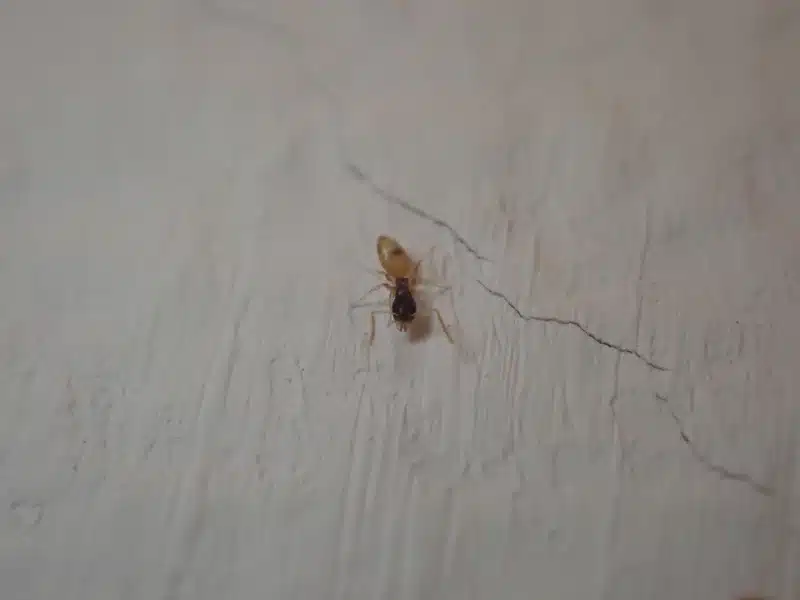
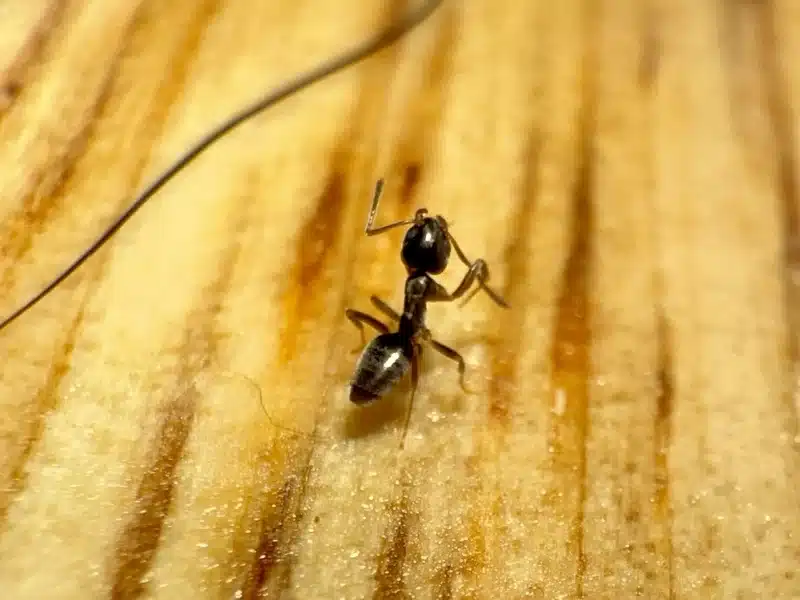
Ghost ants are extremely small, measuring only 1.3-1.5 mm (about 1/16 inch). They’re among the tiniest ants you’ll encounter indoors. Sugar ants (odorous house ants) are noticeably larger at 2.4-3.3 mm (about 1/8 inch).
This size difference becomes obvious when you see both species side by side. The tiny size of ghost ants often makes homeowners think they’re seeing baby ants, but these are actually full-grown workers.
🔍 Identification Tip: Use a magnifying glass to properly identify tiny ants. The size difference between ghost ants (1/16 inch) and sugar ants (1/8 inch) is subtle but crucial for choosing the right treatment approach.
Ghost ants get their name from their distinctive appearance. Their head and thorax are dark brown to black, while their abdomen and legs are translucent pale white. This gives them a “half-clear” look that’s unmistakable once you know what to watch for.
Sugar ants appear uniformly dark brown to shiny black across their entire body. There’s no bicoloration – they maintain consistent dark coloring from head to abdomen.
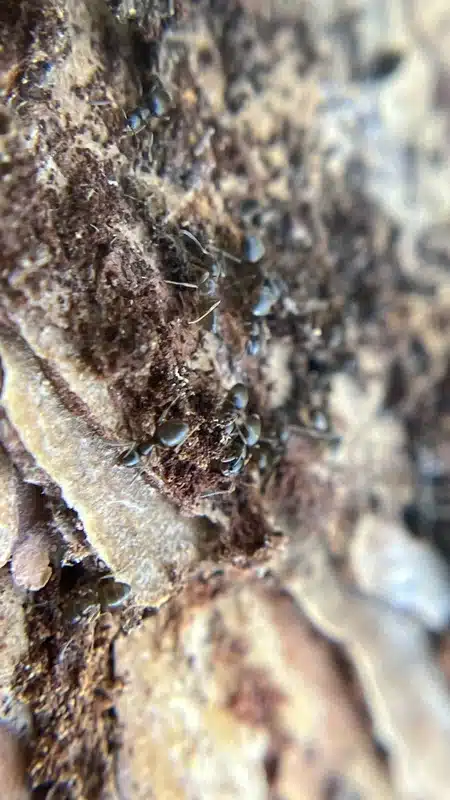
Beyond physical traits, these ant species display distinct behaviors that help with identification. Understanding these patterns helps homeowners distinguish between ghost ants and sugar ants during active infestations.
Ghost ants move rapidly and erratically. Their trails appear faint because of their translucent bodies, especially on light-colored countertops. Workers seem to dart around almost randomly compared to other ant species.
Sugar ants form strong, organized columns along edges, wires, and baseboards. When disturbed, they raise their abdomens – a defensive behavior that’s characteristic of this species. Their trails are much more visible and predictable.
Both species emit a distinctive rotten-coconut or blue-cheese odor when crushed. However, homeowners typically notice this smell more with sugar ants because their colonies contain more workers and they’re larger insects.
This odor test can help confirm identification, but it requires crushing a few workers. Most people prefer visual identification methods first.
Understanding where these ant species build their nest sites helps explain why certain treatment approaches work better than others. Each species has evolved different nesting strategies that impact how we eliminate them.
Ghost ant colonies are polygynous (multiple queens) and highly polydomous (multiple nest sites). A single ghost ant infestation can involve thousands of workers with many queens spread across numerous satellite nests.
In Virginia and Maryland homes, ghost ants typically nest in wall voids, potted plants, electrical boxes, and even book bindings. They require warm, humid conditions to survive, which is why they’re found primarily indoors in our climate.
In Virginia and Maryland, ghost ants survive primarily indoors year-round, with most sightings tracing back to heated indoor spaces or recently imported tropical plants.
According to University of Florida research, ghost ants cannot overwinter outdoors north of approximately 34° latitude due to their tropical origins. This means outdoor colonies are extremely rare in the Virginia-Maryland area, which is why infestations are primarily linked to heated indoor environments and tropical plant imports.
Sugar ant colonies in urban environments form massive super-colonies with dozens to hundreds of queens. This is different from their native woodland behavior, where colonies remain small with single nests.
These ants practice seasonal polydomy – they overwinter in one primary nest, then split into satellite nests from March through September. Common outdoor nesting sites include mulch, under stones, in rotting wood, beneath roof sheathing, and around foundation walls.
In areas like Chantilly, Virginia, the dark red soil is particularly conducive to ant nesting next to foundation walls. These ants seek moisture that’s given off as homes heat and cool throughout the day.
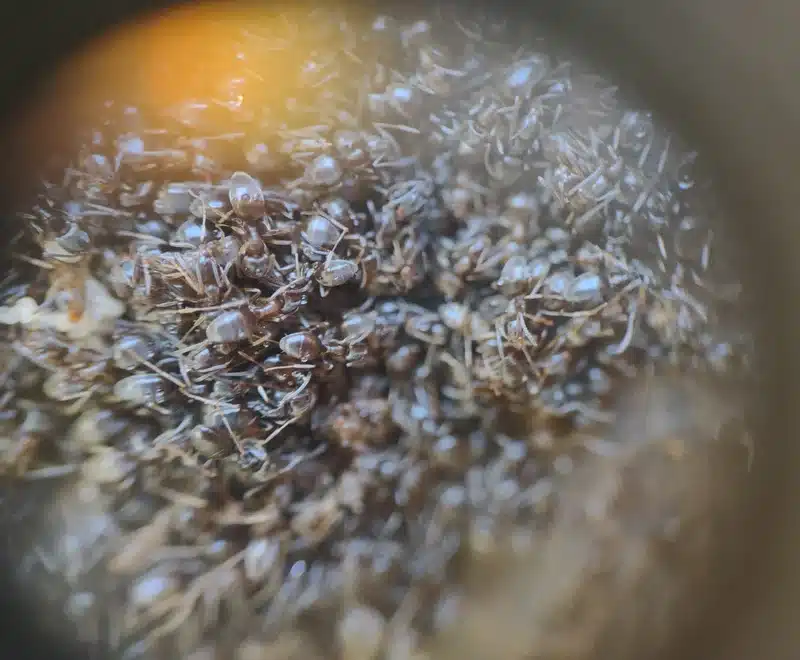
Both ghost ants and sugar ants are attracted to sweet foods, which explains why homeowners often find them in kitchens and dining areas. However, their specific food preferences and foraging patterns differ in important ways.
Ghost ants show an extreme preference for sweet liquids like honeydew, nectar, syrup, and sugary spills. They’re less likely than other ant species to switch to protein sources, even when colony demands change.
This strong preference for sweet foods makes liquid baits particularly effective against ghost ant colonies. Workers quickly locate and share liquid sugar sources with the rest of the colony.
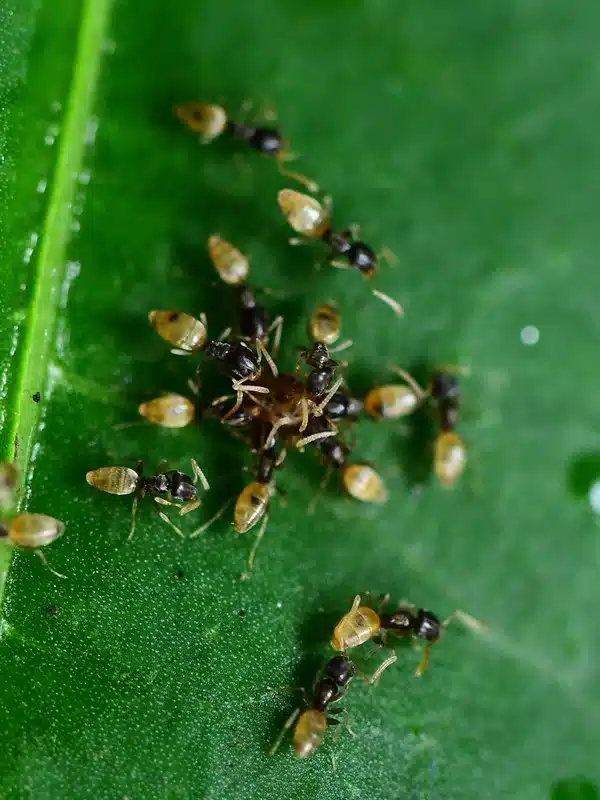
Sugar ants are generalist omnivores that readily switch between sweet substances and proteins or oils based on colony needs. They’ll scavenge dead insects, pet food, grease, and various household spills.
This dietary flexibility means sugar ant control often requires dual-choice baits (both sweet and protein-based) to address changing colony preferences throughout the season.

Knowing when these ant species are most active helps homeowners understand why they might suddenly notice tiny ants in their homes during certain times of year.
Ghost ants remain active year-round indoors given temperatures between 72-77°F and humidity above 70%. They’re not affected by outdoor seasonal changes because they live primarily within heated structures.
Homeowners might suddenly notice ghost ants mid-winter when heating systems create ideal conditions in wall voids or when new tropical plants are brought indoors.
Sugar ants show peak foraging and household invasion from April through October. Rain events commonly flush them indoors as they seek dry harborage. Winter activity occurs mostly inside heated structures.
Spring is when most homeowners first notice sugar ant problems. As I’ve observed over the years, most complaints in Virginia and Maryland come during this season when colonies are establishing satellite nests.
Effective ant control requires species-specific approaches. What works for sugar ants may actually make ghost ant problems worse, and vice versa. Here’s how professional pest control addresses each species.
Ghost ant colonies require careful treatment because they’re prone to budding when disturbed. Spraying visible workers often causes the colony to split into multiple satellite locations, making the infestation worse.
The most effective approach involves liquid sugar-based baits placed on active foraging trails. Ghost ants respond well to baits containing 1-5% boric acid or 50 ppm imidacloprid in sweet formulations.
Physical exclusion is crucial for long-term ghost ant control. This means sealing micro-gaps around window tracks, shower fixtures, and conduit penetrations. Silicone sealant or stainless-steel mesh in weep holes helps prevent entry through tiny cracks and crevices.
Sugar ant control typically begins with dual-choice baits offering both sweet and protein options. Professional treatments achieve significant colony reduction within 6 weeks using liquid imidacloprid baits.
Field trials from the International Conference on Urban Pests demonstrate that liquid imidacloprid baits achieve over 80% reduction in odorous house ant (sugar ant) activity within 6 weeks. The study found dual-choice formulations (offering both sweet and protein options) were most effective for addressing changing colony preferences throughout the season.
Exterior perimeter treatments using non-repellent insecticides create protective barriers around homes. These materials work because ants don’t detect them, allowing workers to carry the treatment back to satellite colonies.
Nest remediation focuses on outdoor harborage sites. This includes treating mulch areas, landscape timbers, and other locations where colonies overwinter or establish satellite nests.
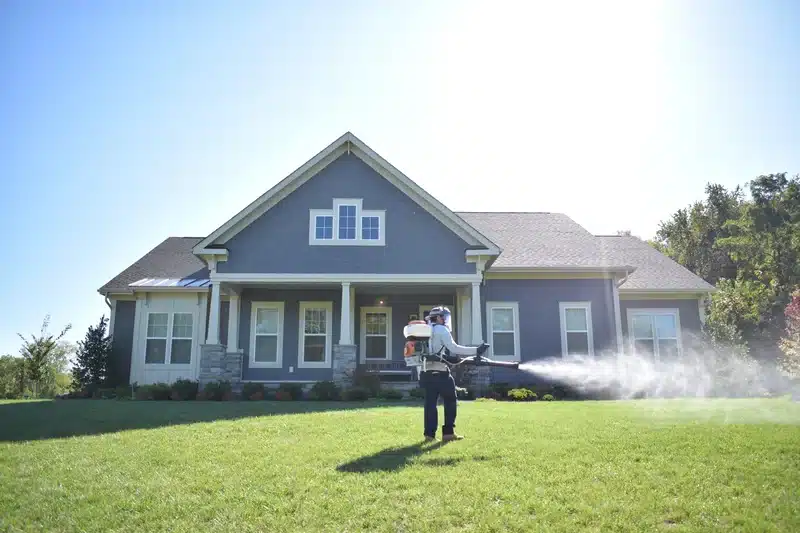
Many homeowners attempt DIY pest control methods before calling professionals. Understanding the limitations of store-bought products helps explain why professional treatment often becomes necessary.
Most over-the-counter ant sprays contain repellent ingredients like pyrethroids. While these kill ants on contact, they actually make infestations worse by causing colony budding and trail avoidance.
Ghost ants are particularly sensitive to spray treatments. The colony fragments into multiple satellite nests when workers detect repellent chemicals, turning a single infestation into multiple problem areas.
Additionally, homeowners often misidentify the ant species, leading to inappropriate treatment choices. What works against larger ants like carpenter ants rarely succeeds against tiny species like ghost ants.
⚠️ Treatment Warning: Never spray ghost ants with repellent insecticides. This causes “budding” where the colony splits into multiple satellite nests, making your infestation significantly worse.
Licensed technicians begin with proper species identification using size, color, and behavioral cues. This ensures treatment targets the specific biology and habits of the pest involved.
Professional pest control services use non-repellent materials and specialized bait formulations not available to consumers. These products work with ant behavior rather than against it.
Our approach includes a detailed 78-point home inspection to identify entry points, moisture issues, and conducive conditions. We address the root causes of infestations, not just the visible symptoms.
Preventing ant infestations involves addressing the conditions that attract these pests to homes in the first place. Both species require similar preventive measures, though emphasis varies by species.
Remove food residues promptly, especially sweet spills that attract both ant species. Store honey, syrup, and other sweet foods in airtight containers. Clean pet food bowls after feeding and don’t leave food out overnight.
Wipe down counters with soapy water to remove invisible food films and pheromone trails. This disrupts the scent trail that guides worker ants to food sources.
Fix plumbing leaks, improve ventilation in humid areas, and address condensation problems. Both ghost ants and sugar ants require water sources and are drawn to homes with moisture issues.
Pay special attention to areas around dishwashers, under sinks, and in basements where humidity tends to accumulate.
Seal cracks around windows, doors, and foundation penetrations. Use silicone caulk for small gaps and expanding foam for larger openings. Focus on areas where utilities enter the home.
Pull mulch at least 6 inches back from foundation walls to reduce moisture and nesting sites near the home. Prune vegetation that contacts siding to eliminate ant highways.
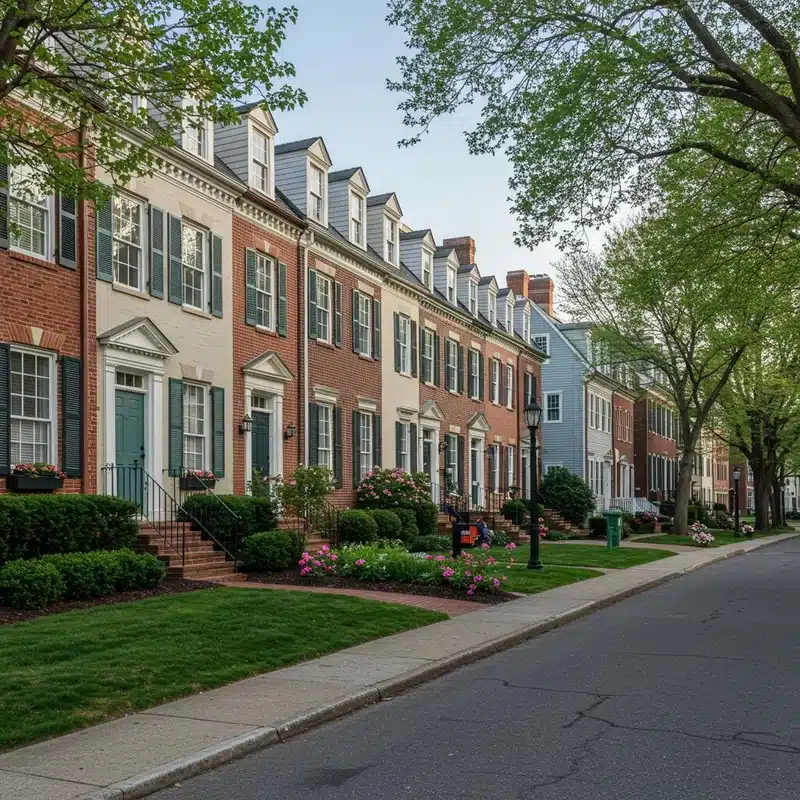
While some minor ant problems respond to homeowner efforts, certain situations require professional intervention. Knowing when to call pest control services can save time, money, and frustration.
If you’ve tried multiple DIY methods without success, it’s time for professional pest control solutions. Persistent ant activity despite your efforts usually indicates a large colony or multiple satellite nests.
Ghost ant infestations particularly benefit from professional treatment because of their complex colony structure and sensitivity to improper treatment methods. Homeowners often make these infestations worse through trial-and-error approaches.
When ants appear in multiple areas of your home simultaneously, this suggests an established infestation that requires comprehensive treatment beyond what consumer products can provide.
Our licensed technicians start with thorough inspection to identify the exact ant species, locate entry points into your home, and determine the scope of the infestation. This information guides treatment selection.
Treatment typically involves both interior crack and crevice applications and exterior perimeter barriers using non-repellent materials. We focus on long-term colony elimination rather than just killing visible workers.
Follow-up visits ensure treatment effectiveness and allow for adjustments based on ant activity. Most ant control programs include quarterly maintenance to prevent re-infestation.
Successful ant control extends beyond initial treatment to include ongoing prevention and monitoring. This integrated approach provides lasting protection against future infestations.
Our seasonal protection plan addresses the specific types of ants most active during different times of year. Spring treatments target emerging colonies, while fall applications focus on preventing overwintering infestations.
We combine quarterly exterior non-repellent perimeter treatments with targeted interior bait stations in areas where ghost ants or sugar ants are most likely to appear. This creates multiple lines of defense around your home.
Regular monitoring using non-toxic sticky traps helps detect new ant activity before it becomes a major problem. Early detection allows for quick intervention and prevents colony establishment.
If you’re dealing with tiny ants in your Virginia or Maryland home, proper identification is the first step toward effective control. Whether you’re facing ghost ants, sugar ants, or other ant species, our experienced team can help eliminate the infestation and prevent future problems. Our approach removes 9 of the industry’s harshest chemicals while delivering results you can count on.
Don’t let a small ant problem become a major infestation. Call us at 703-683-2000 to speak directly with a licensed technician, or email us at info@bettertermite.com for expert help identifying and eliminating these tiny home invaders.
Stop guessing what type of ants you have. Get professional identification and targeted treatment for ghost ants, sugar ants, and other tiny invaders.
The most effective approach involves species-specific liquid baits placed on active foraging trails, combined with exterior perimeter treatments using non-repellent materials. Ghost ants require sugar-based baits, while sugar ants respond to dual-choice baits offering both sweet and protein options. Professional treatment typically achieves over 80% reduction within 6 weeks.
Ghost ants are among the most challenging because their colonies are polygynous (multiple queens) and highly polydomous (multiple nest sites). They’re also prone to budding when disturbed by improper treatment methods. Fire ants, pharaoh ants, and carpenter ants also present significant control challenges due to their complex colony structures.
Ghost ants don’t sting and pose minimal direct health risks to humans. However, they can contaminate food surfaces as they trail across trash, drains, and other unsanitary areas before reaching food preparation areas. They’re primarily a nuisance pest rather than a health threat.
Ghost ants enter homes seeking warm, humid conditions and food sources. Common attractants include sweet spills, moisture problems, potted tropical plants, and heated areas like wall voids. In Virginia and Maryland, they survive primarily indoors since they cannot overwinter outdoors in our climate.
Ghost ants are much smaller (1/16 inch) with distinctive pale, translucent abdomens and dark heads, while sugar ants (odorous house ants) are larger (1/8 inch) and uniformly dark brown to black. Ghost ants move erratically and prefer sweet liquids, while sugar ants form organized trails and eat both sweets and proteins.
No, each species requires targeted treatment approaches. Ghost ants need sugar-based liquid baits and are extremely sensitive to spray treatments that cause colony budding. Sugar ants respond better to dual-choice baits and can tolerate perimeter spray treatments. Using the wrong approach often makes infestations worse.
Ghost ant elimination typically takes 4-8 weeks with proper treatment methods. The complex colony structure with multiple queens and satellite nests requires persistent baiting until all colony segments are affected. Homeowners should maintain bait stations until zero ant activity is observed for 7 consecutive days.
Increased ant activity immediately after treatment is normal and indicates the bait is working. Worker ants recruit more nestmates to the food source (bait), which helps distribute the active ingredient throughout the colony. This initial increase typically subsides within 3-7 days as the colony begins to decline.

With five years of hands-on experience in the pest control industry, George Schulz is a registered technician with the Virginia Pest Management Association and a proud third-generation professional in a family business that’s been protecting homes for over 57 years. He manages and trains a team of service pros while also leading internal research efforts—recently spearheading a deep-dive review of thousands of documents on pest control materials to hand-pick the most kid and pet friendly, most effective solutions tailored specifically for homes in the DC metro area. Read his bio.

